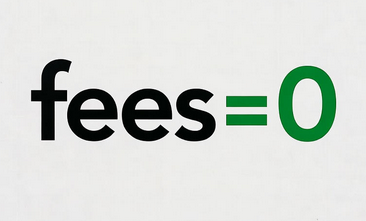Influence of Spike-Nosed Length on Aerodynamic Drag of a Wing-Projectile Model
DOI:
https://doi.org/10.3849/aimt.01542Keywords:
aerospike, drag coefficient, flow fields, umerical methodsAbstract
In this study, the effect of spike-nosed length on aerodynamic drag of a wing-projectile model was investigated at supersonic conditions. The projectile BK-13 with convex nose was selected for the study. The ratio of nose diameter and model diameter was fixed at around 0.34 while the ratio of the length of the nose and the model diameter was changed from 1.25 to 2.75. Numerical simulation with turbulent model k-ε was applied for flow structure around the model. The effect of mesh size and numerical models on the drag of the standard model was investigated. The study showed that numerical methods allow to obtain highly accurate drag coefficients. As the length of aerospike increases, the drag coefficient quickly decreases and obtains a minimum value at l/D = 2.0. The effect of spike-nosed length and velocity on flow pattern and drag of the model was explained in details in this study.
References
STALDER J.R. and H.V. NIELSEN. Heat Transfer from a Hemisphere-Cylinder Equipped with Flow-Separation Spikes [Technical note]. Washington: NACA, 1954.
MANSOUR K. and M. KHORSANDI. The Drag Reduction in Spherical Spiked Blunt Body. Acta Astronautica, 2014, 99(1), pp. 92-98. DOI 10.1016/j.actaastro.2014.02.009.
NARAYAN A., S. NARAYANAN and R. KUMAR. Hypersonic Flow Past Nose Cones of different Geometries: a Comparative Study. Simulation, 2018, 94(8), pp. 665-680. DOI 10.1177/0037549717733051.
AHMED M.Y.M. and N. QIN. Drag Reduction Using Aerodisks for Hypersonic Hemispherical Bodies. Journal of Spacecraft and Rockets, 2010, 47(1), pp. 62‑80. DOI 10.2514/1.46655.
DAS S., P. KUMAR and J.K. PRASAD. Hypersonic Flow over Hemispherical Blunt Body with Spikes. Scientia Iranica, 2019, 26(1B), pp. 358-366. DOI 10.24200/sci.2018.20339.
HUTT G.R. and A.J. HOWE. Forward Facing Spike Effects on Bodies of Different Cross Section in Supersonic Flow. The Aeronautical Journal, 1989, 93(926), pp. 229-234. DOI 10.1017/S0001924000017085.
HUANG W., Z. CHEN, L. YAN, B. BIN and D.Z. BO. Drag and Heat Flux Reduction Mechanism Induced by the Spike and its Combinations in Supersonic Flows: A Review. Progress in Aerospace Science, 2018, 105(9), pp. 31-39. DOI 10.1016/j.paerosci.2018.12.001.
Z. EGHLIMA and K. MANSOUR. Drag Reduction for the Combination of Spike and Counterflow Jet on Blunt Body at High Mach Number Flow. Acta Astronautica, 2016, 133(11), pp. 103-110. DOI 10.1016/j.actaastro.2017.01.008.
ANTONETS A.V. Application of the Method of Invariant Relations in Analyzing the Parametric Dependences of the Aerodynamic Parameters of the Classical Axisymmetric Noses of Flight Vehicles. Fluid Dynamics, 2015, 50(2), pp. 272-282. DOI 10.1134/S0015462815020118.
KALIMUTHU R., R.C. MEHTA and E. RATHAKRISHNAN. Experimental Investigation on Spiked Body in Hypersonic Flow. The Aeronautical Journal, 2008, 112(1136), pp. 593-598. DOI 10.1017/S0001924000002554.
ZHONG K., C. YAN, S.S. SHENG, T.Z. XIN and S. LOU. Aerodisk Effects on Drag Reduction for Hypersonic Blunt Body with an Ellipsoid Nose. Aerospace Science and Technology, 2019, 86(6), pp. 599-612. DOI 10.1016/j.ast.2019.01.027.
TRAN T.H., H.Q. DINH, H.Q. CHU, V.Q. DUONG, C. PHAM and V.M. DO. Effect of Boattail Angle on Near-wake Flow and Drag of Axisymmetric Models: a Numerical Approach. Journal of Mechanical Science and Technology, 2021, 35(2), pp. 563-573. DOI 10.1007/s12206-021-0115-1.
LE, D.A., T.H. PHAN and T.H. TRAN. Assessment of Homogeneous Model for Simulating a Cavitating Flow in Water Under a Wide Range of Temperatures.. ASME Journal of Fluids Engineering, 2021, 143(10), 101204. DOI 10.1115/1.4051078.
LE, D.A. and T.H. TRAN. Improvement of Mass Transfer Rate Modeling for Prediction of Cavitating Flow. Journal of Applied Fluid Mechanics, 2022, ISSN 1735-3572 (in press).
TRAN, T.H., T. AMBO, T. LEE, L. CHEN, T. NONOMURA and K. ASAI. Effect of Boattail Angles on the Flow Pattern on an Axisymmetric Afterbody Surface at Low Speed. Experimental Thermal and Fluid Science, 99(2018), pp. 324-335. DOI 10.1016/j.expthermflusci.2018.07.034.
TRAN, T.H. and L. CHEN. Wall Shear Stress Extraction by an Optical Flow Algorithm with a Sub-grid Formulation. Acta Mechanics Sinica, 2021, 37(1), pp 65-79. DOI 10.1007/s10409-020-00994-9.
TRAN, T.H. The Effect of Boattail Angles on the Near-wake Structure of Axisymmetric Afterbody Models at Low-speed Condition. International Journal of Aerospace Engineering, 2020, 7580174. DOI 10.1155/2020/7580174.
LAUNDER B.E. and D.B. SPALDING. The Numerical Computation of Turbulent Flows. Computer Methods in Applied Mechanics and Engineering, 1974, 3(2), pp. 269-289. DOI 10.1016/0045-7825(74)90029-2.
TRAN T.H. and L. CHEN. Optical-Flow Algorithm for Near-Wake Analysis of Axisymmetric Blunt-Based Body at Low-Speed Conditions. Journal of Fluids Engineering, 2020, 142(11), pp. 1-10. DOI 10.1115/1.4048145.
TRAN, T.H., T. AMBO, T. LEE, K. OZAWA, L. CHEN, T. NONOMURA and K. ASAI. Effect of Reynolds Number on Flow Behavior and Pressure Drag of Axisymmetric Conical Boattails in Low-Speed Conditions. Experiments in Fluids, 2019, 60(3), pp. 1-19. DOI 10.1007/s00348-019-2680-y.
Downloads
Published
License
Copyright (c) 2022 Advances in Military Technology

This work is licensed under a Creative Commons Attribution-NonCommercial 4.0 International License.
Authors who publish with this journal agree to the following terms:
1. Authors retain copyright and grant the journal right of first publication with the work simultaneously licensed under a Creative Commons Attribution License that allows others to share the work with an acknowledgement of the work's authorship and initial publication in this journal.
2. Authors are able to enter into separate, additional contractual arrangements for the non-exclusive distribution of the journal's published version of the work (e.g., post it to an institutional repository or publish it in a book), with an acknowledgement of its initial publication in this journal.
3. Authors are permitted and encouraged to post their work online (e.g., in institutional repositories or on their website) prior to and during the submission process, as it can lead to productive exchanges, as well as earlier and greater citation of published work.
Users can use, reuse and build upon the material published in the journal for any purpose, even commercially.






